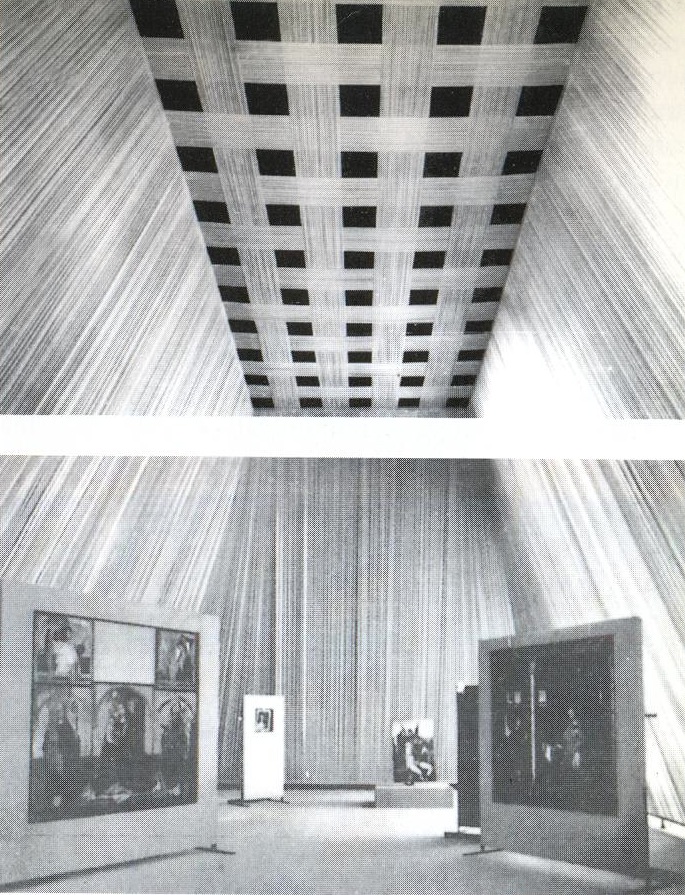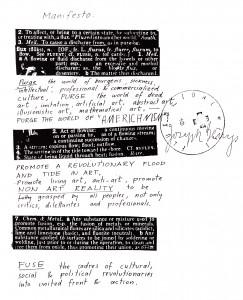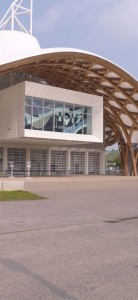… riflessioni attorno alle
pratiche d’agencement …
In questo breve articolo ci occuperemo della tipologia allestitiva che vede nel materiale il focus allestitivo. Il materiale, presente in una mostra, è per l’occhio sia struttura che tessitura dell’allestimento. Il suo effetto dipende da una serie di caratteristiche che le sono proprie, come : il colore, la trasparenza, la trama, il trattamento della superficie, la capacità di accogliere la luce e di rifletterla, la resistenza.
Lo spazio e le forme dell’allestimento possono essere influenzati in maniera decisiva dalla tipologia di materiale scelto, creando così una subordinazione nelle scelte allestitive. Il materiale, dunque, è un elemento dell’allestimento che ha una funzione importante sia fisiologica che psicologica, diventando in molti casi un concept sul quale costruire il progetto allestitivo.
Il tessuto, o l’enfasi barocca
Carlo Scarpa, allestimento mostra “Antonello da Messina”, Municipio, Messina, 1953.
Boutique Mademoiselle di Sorrento.
Esposizione I protagonisti del design italiano, Salone del mobile, Milano, 2009.
[Note] Le immagini 1 e 2 sono state tratte da Pier Federico Caliari, “La forma dell’effimero”, Milano, Ed. Lybra, 2000 e da “Nuovo Allestimento Italiano”, Milano, Ed. Lybra, 1997.


































